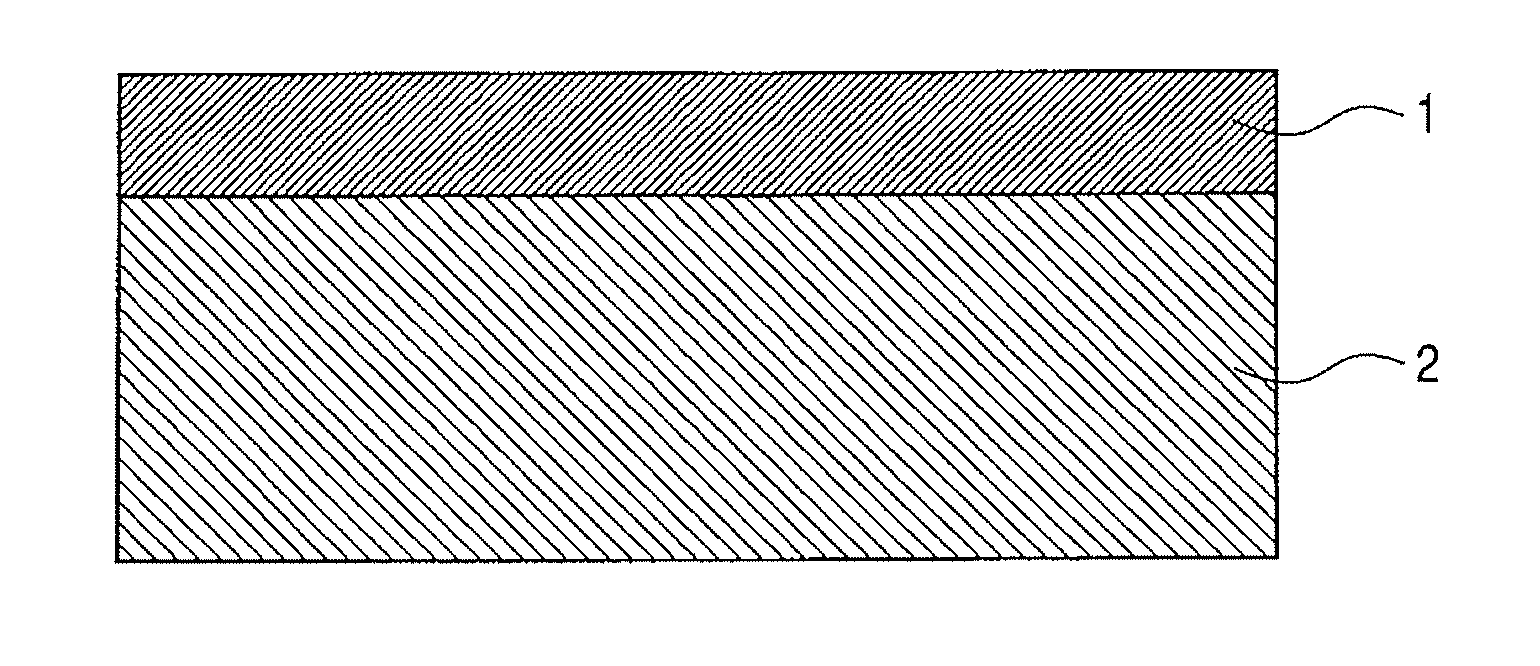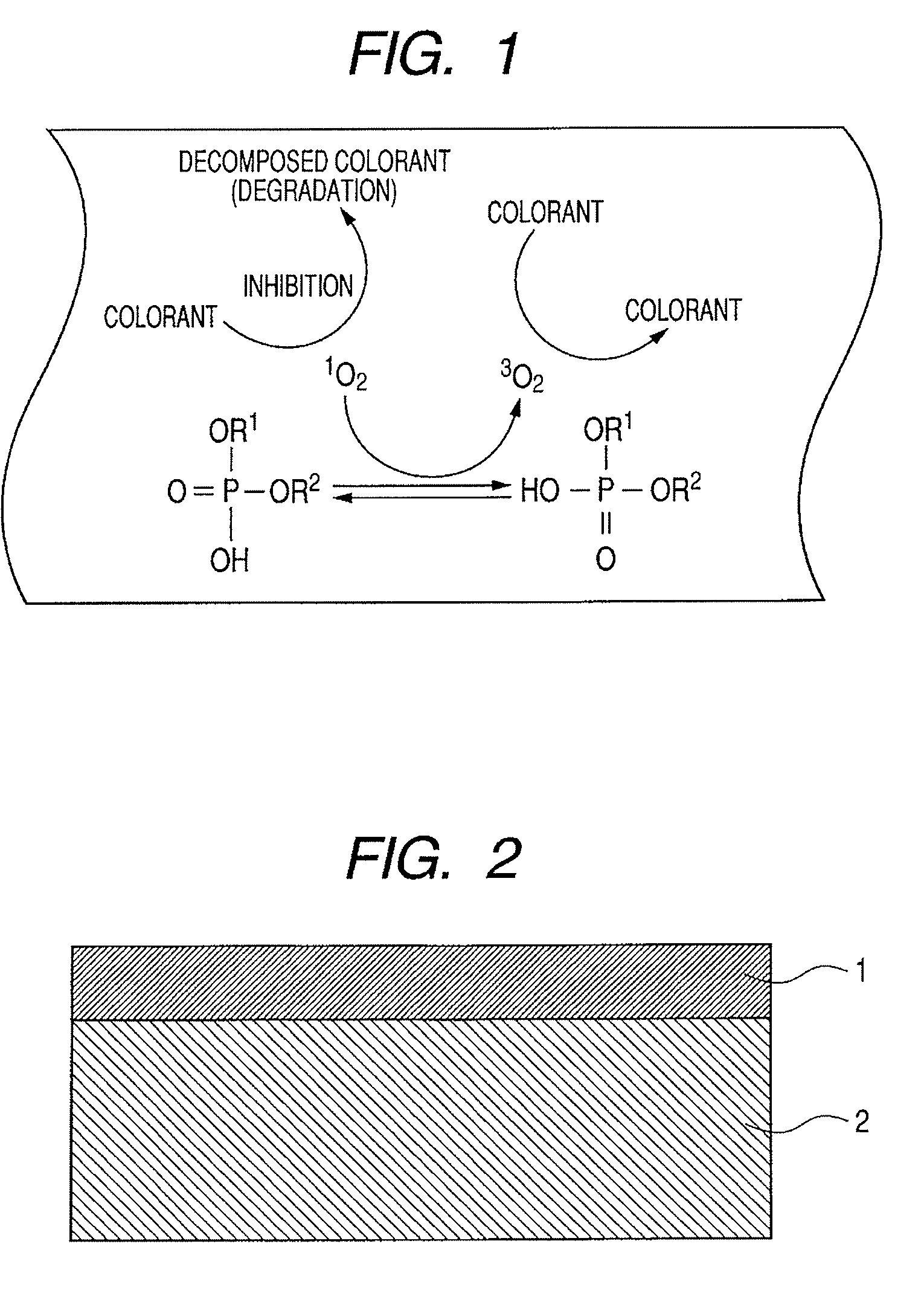Image fading preventing agent, image forming element, recording medium, image forming method and image
a technology of image fading and preventing agent, which is applied in the direction of inks, instruments, printing, etc., can solve the problems of inability to maintain image quality, easy oxidation of unstable compounds, deterioration of coloring-material-receptive properties and ink absorbency at half tone or secondary color portions, etc., to prevent discoloration/fading of image formed and maintain image quality stably
- Summary
- Abstract
- Description
- Claims
- Application Information
AI Technical Summary
Benefits of technology
Problems solved by technology
Method used
Image
Examples
examples
[0119]The present invention will hereinafter be described in more detail by the Examples and Comparative Examples. However, the present invention is not limited to these examples.
[0120]Q)>
[0121]The singlet oxygen quenching rates of the coloring material and image fading preventing agent were measured under the following conditions in accordance with the above-described competitive reaction method. Ethanol was used as a solvent for measurement to prepare a solution in which a singlet oxygen generating agent [3-(1,4-epodioxyl-4-methyl-1,4-dihydro-1-naphthyl)propionic acid (EP)] adjusted to 1×10−3 M, a reference substance [2,5-diphenyl-3,4-benzofuran (DPBF)] for quenching which was adjusted to 1×10−3 M, and a substance to be measured (a coloring material or image fading preventing agent) which was adjusted to 1×10−5 M are present together. The solution was heated to 35° C., thereby generating singlet oxygen from EP to conduct a competitive reaction to quench the singlet oxygen by DPBF ...
examples 1 to 9
Comparative Examples 1 to 6
[0166]Ink-jet recording was conducted with Ink Composition A or B prepared above by means of an ink-jet printer (trade name: iP8600, manufactured by Canon Inc.). Ink-Jet Recording Media 1 to 9 produced above were used as ink-jet recording media to conduct printing on a region having a size of 1.0 cm×1.0 cm under control of printing duty to prepare samples for a fluorescent lamp test. Since the amount of the ink ejected at this time was 19.5 g / m2, and the concentration of the dye was 6.0% by mass as described above, the dye comes to be ejected in an amount of 1.17 g / m2 in terms of solid content.
[0167]The combinations of the ink composition and ink-jet recording method used are as shown in Table 2.
[0168]
[0169]As a discoloration / fading test for confirming the effects of the present invention, a 600-hour accelerated light fastness test was conducted under temperature and humidity conditions of 30° C. and 50% RH with a cool white fluorescent lamp of 60,000 lux....
PUM
| Property | Measurement | Unit |
|---|---|---|
| absorption wavelength | aaaaa | aaaaa |
| particle size | aaaaa | aaaaa |
| specific surface area | aaaaa | aaaaa |
Abstract
Description
Claims
Application Information
 Login to View More
Login to View More - R&D
- Intellectual Property
- Life Sciences
- Materials
- Tech Scout
- Unparalleled Data Quality
- Higher Quality Content
- 60% Fewer Hallucinations
Browse by: Latest US Patents, China's latest patents, Technical Efficacy Thesaurus, Application Domain, Technology Topic, Popular Technical Reports.
© 2025 PatSnap. All rights reserved.Legal|Privacy policy|Modern Slavery Act Transparency Statement|Sitemap|About US| Contact US: help@patsnap.com



